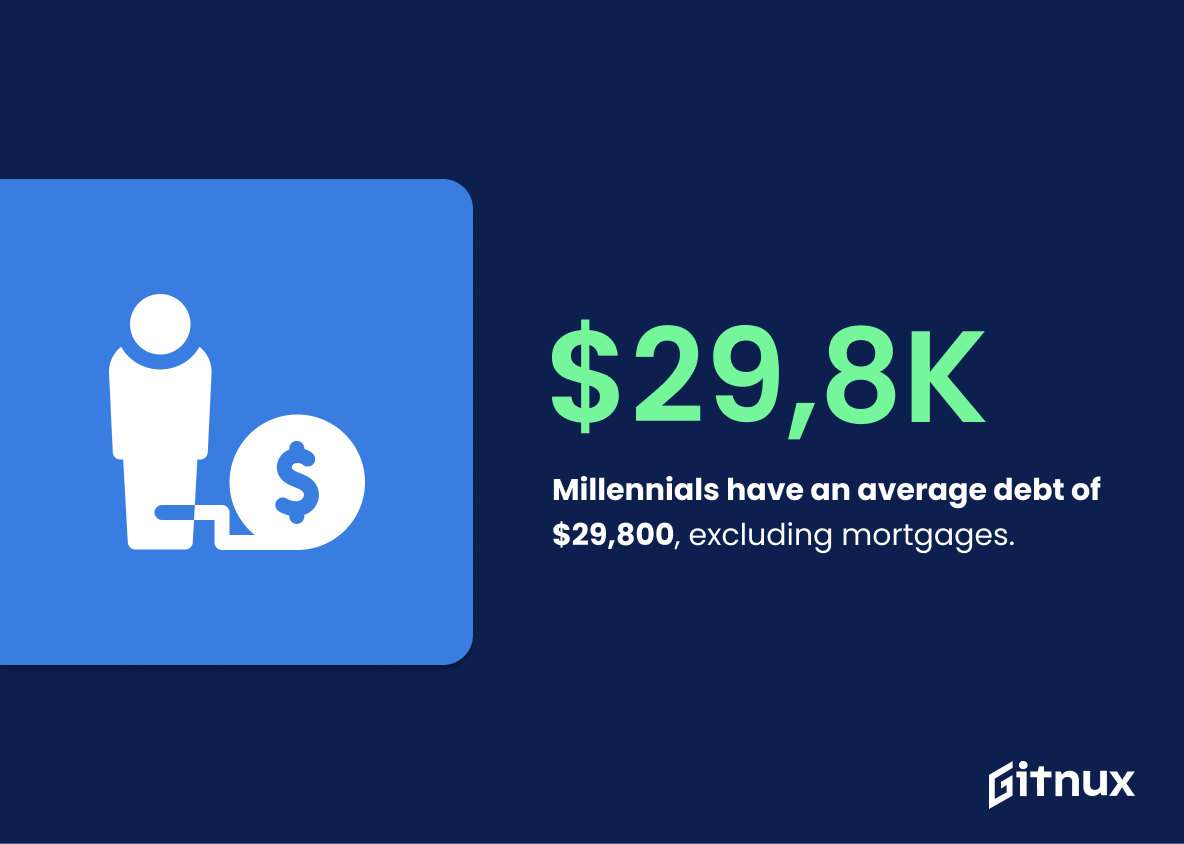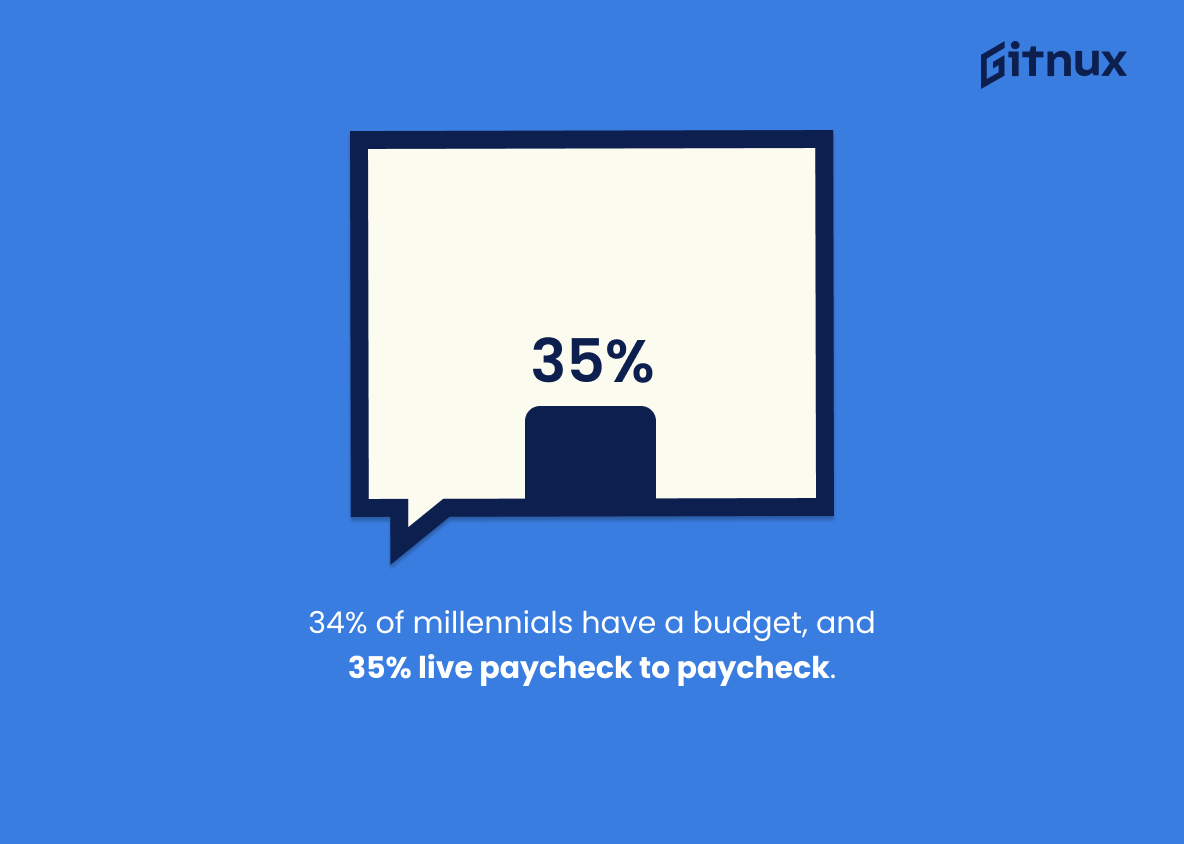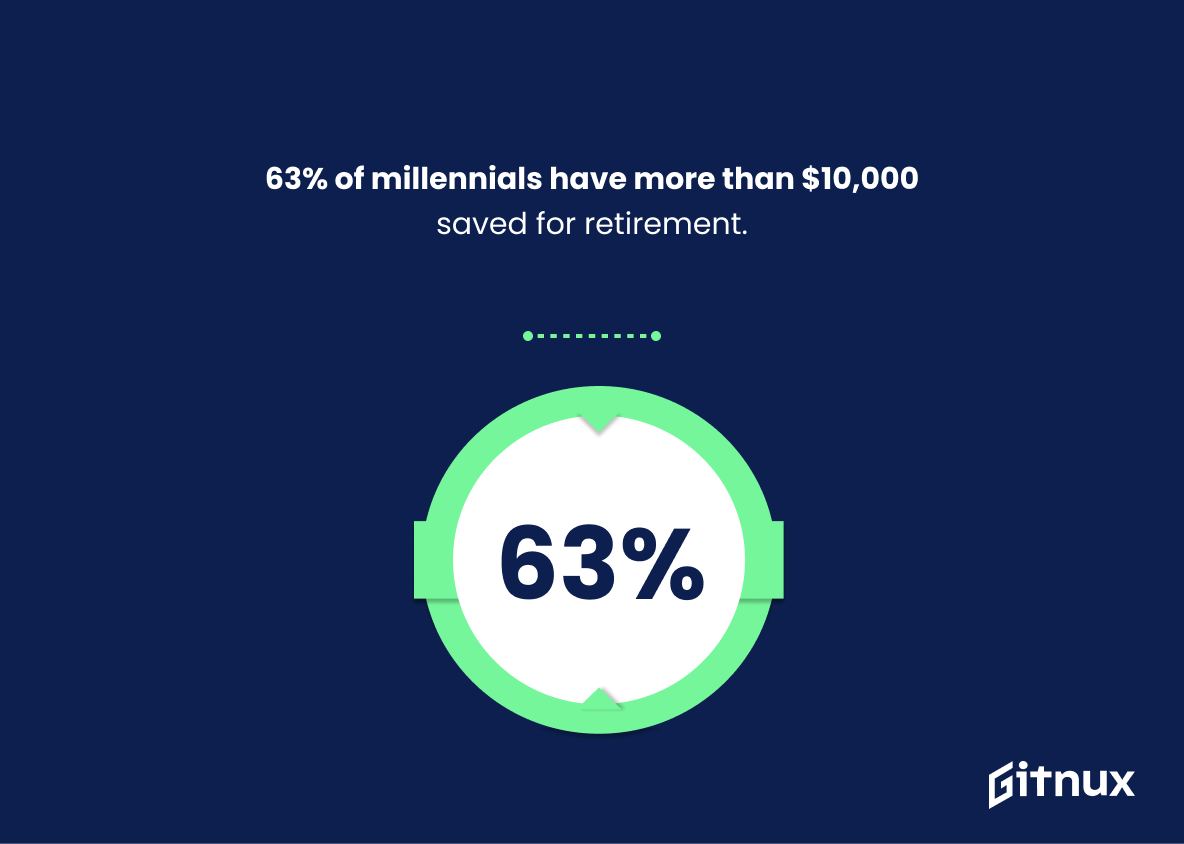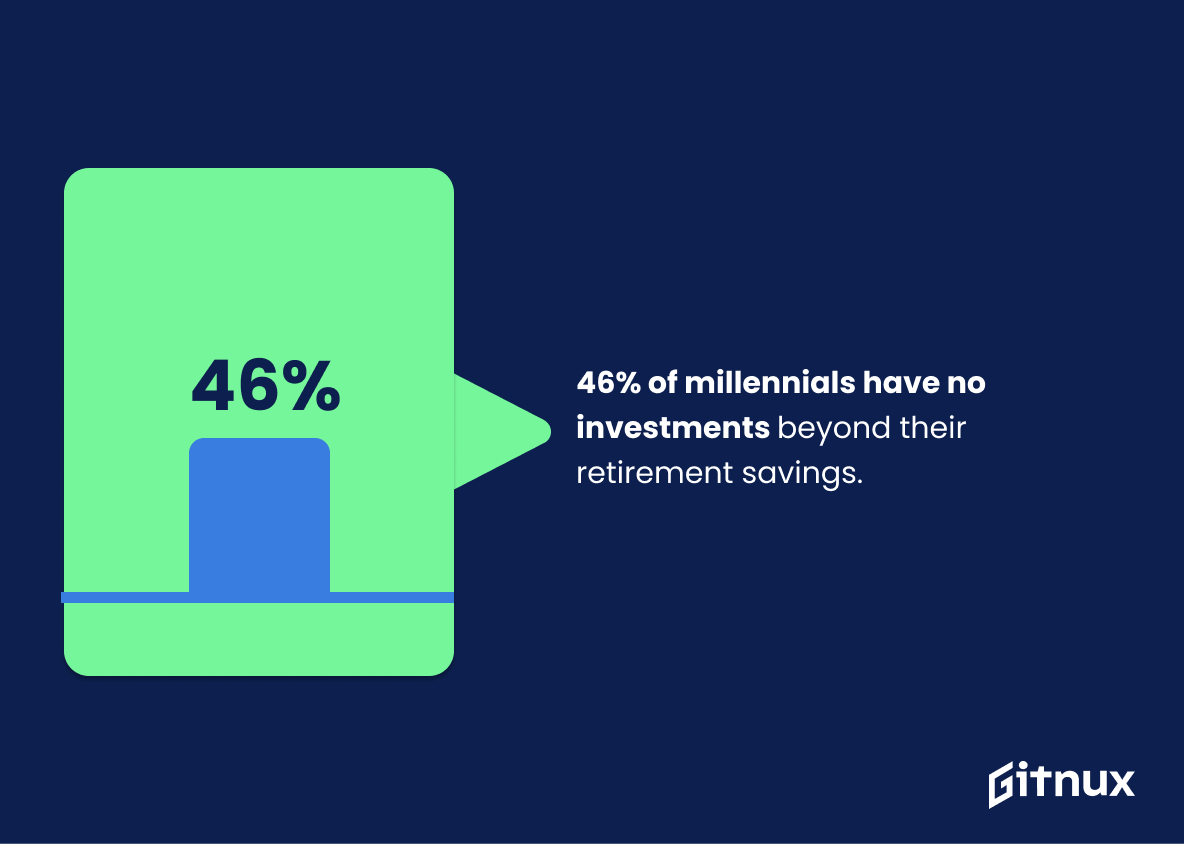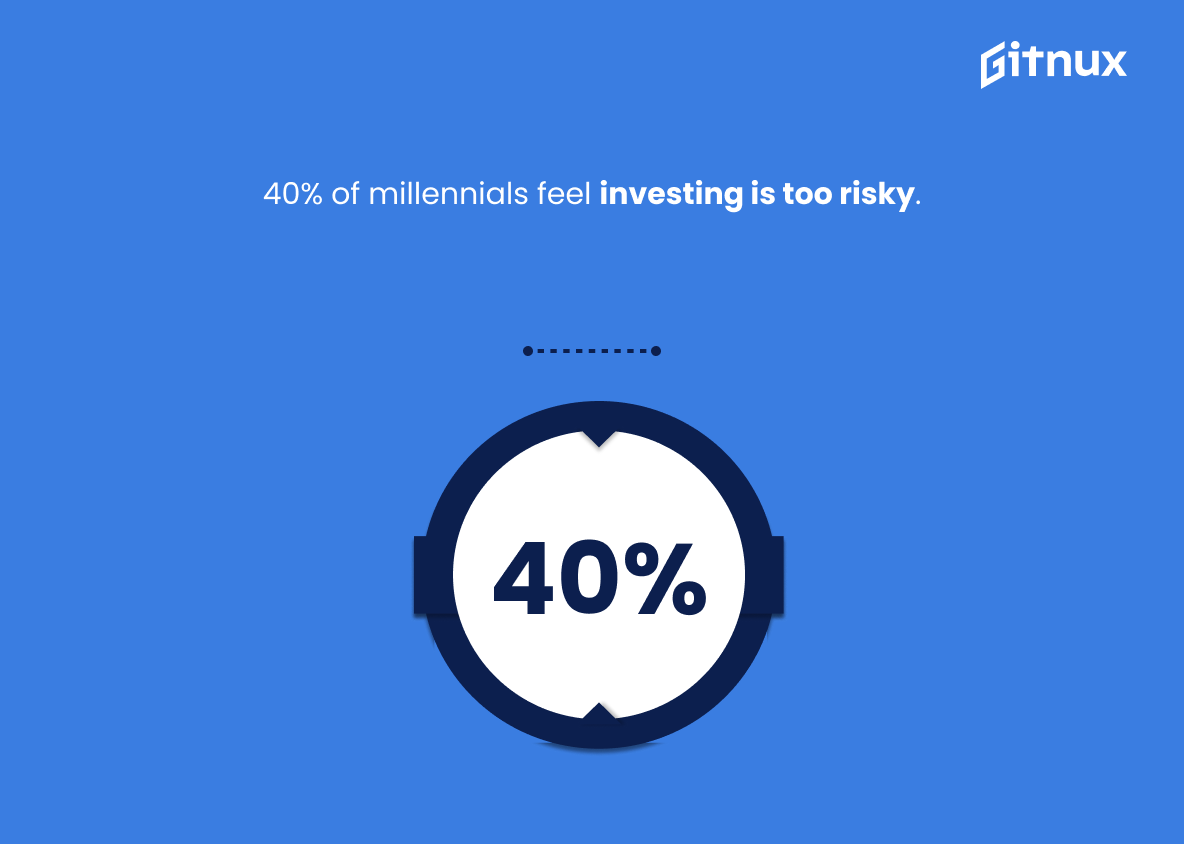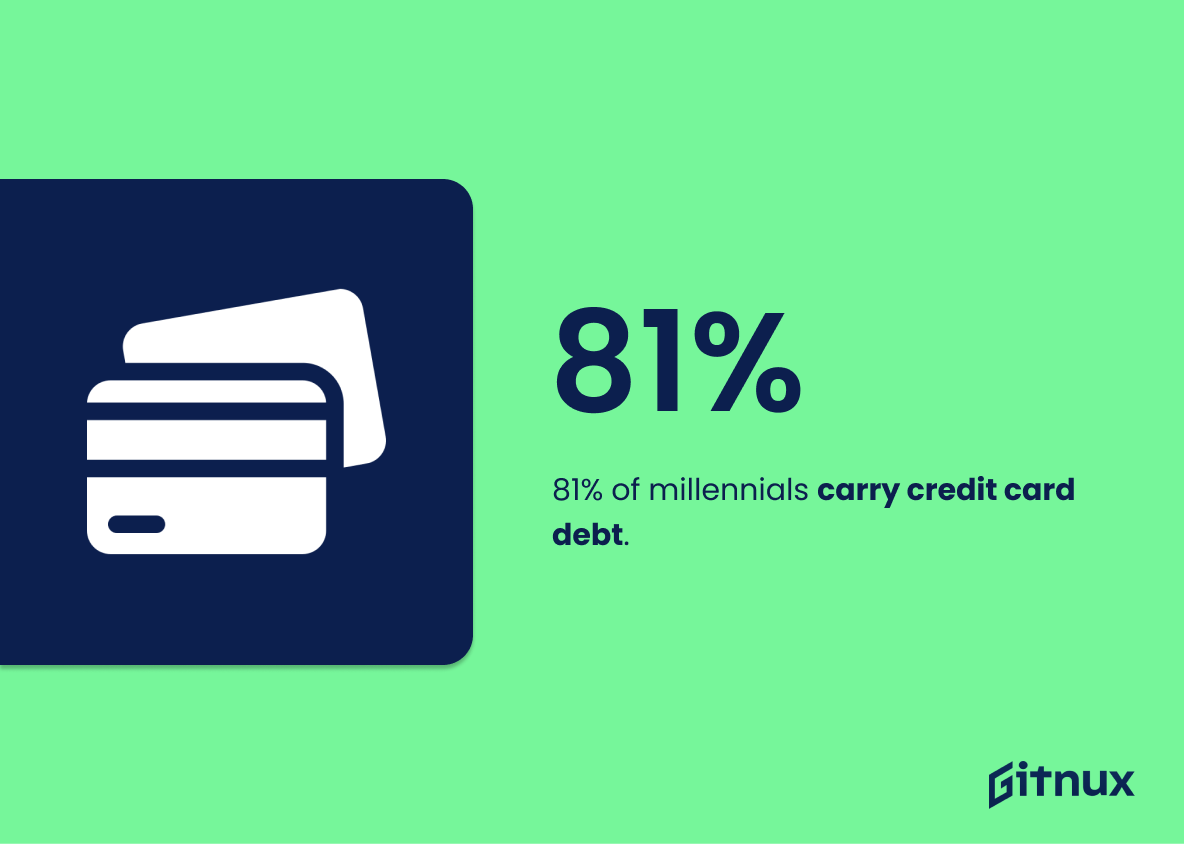Millennials are the largest generation in history, and their financial habits have been studied extensively. From net worth to retirement savings, debt levels to budgeting practices, this blog post will explore 20 statistics about millennial finances that provide insight into how they manage money. We’ll look at average net worths and debts as well as saving habits and attitudes towards investing. Additionally, we’ll examine spending patterns for nonessential items such as subscriptions or entertainment expenses. Finally, we’ll discuss how millennials’ financial decisions affect other areas of life like starting a family or taking on credit card debt.
Millennial Financial Statistics Overview
Millennials have an average debt of $29,800, excluding mortgages.
This statistic is a stark reminder of the financial burden that Millennials are facing. It paints a picture of a generation that is struggling to make ends meet, with an average debt of nearly $30,000. This statistic is a call to action for Millennials to take control of their finances and make smart decisions about their money.
34% of millennials have a budget, and 35% live paycheck to paycheck.
This statistic is a telling indication of the financial state of millennials. It shows that while a significant portion of millennials are taking the responsible step of budgeting, an even larger portion are living paycheck to paycheck, indicating that they may not have enough money to cover their expenses. This is an important insight into the financial struggles of millennials and can be used to inform policy decisions and financial advice.
Millennials are at most risk for financial scams with 40% of reported fraud victims between ages 20-29.
This statistic is a stark reminder of the vulnerability of Millennials when it comes to financial scams. It highlights the need for Millennials to be extra vigilant when it comes to their finances, as they are more likely to be targeted by fraudsters. It also serves as a warning to Millennials to be aware of the potential risks associated with their financial decisions.
64% of millennials own their own home.
This statistic is a telling indication of the financial success of millennials. It shows that despite the economic challenges they face, many millennials are able to purchase their own homes. This is a testament to their hard work and dedication to achieving financial stability.
63% of millennials have more than $10,000 saved for retirement.
This statistic is a telling indication of the financial preparedness of millennials for retirement. It shows that a significant portion of millennials are taking the necessary steps to ensure their financial security in the future. This is an encouraging sign that millennials are taking their financial futures seriously and are actively planning for their retirement.
25% of millennials have a side hustle to help supplement their income.
This statistic is a telling indication of the financial struggles that many millennials face. It speaks to the fact that a quarter of millennials are relying on additional sources of income to make ends meet, suggesting that their primary income is not enough to cover their expenses. This statistic is a powerful reminder of the financial challenges that millennials are facing and the need for more resources to help them manage their finances.
66% of millennials with student loans don’t believe they will repay their debt in full within 10 years.
This statistic is a stark reminder of the financial burden that many millennials are facing. It highlights the reality that, despite their best efforts, many millennials are struggling to pay off their student loans within the expected timeframe. This statistic is a powerful indicator of the financial struggles that millennials are facing, and it serves as a call to action for those who are in a position to help.
56% of millennials feel financially secure.
This statistic is a telling indication of the financial well-being of millennials. It speaks to the fact that a majority of millennials feel confident in their financial situation, which is a positive sign for the future of the generation. It also suggests that millennials are taking steps to ensure their financial security, which is an encouraging sign for the economy as a whole.
46% of millennials have no investments beyond their retirement savings.
This statistic is a stark reminder of the financial struggles that many millennials face. It highlights the fact that, despite their best efforts, many millennials are unable to invest in other areas beyond their retirement savings. This lack of financial security can have a significant impact on their future, as they may not have the resources to take advantage of opportunities that could help them build wealth.
40% of millennials feel investing is too risky.
This statistic is a telling indication of the financial mindset of millennials. It speaks to the fact that many millennials are hesitant to take on the risk associated with investing, which could be a major factor in their financial success. By understanding this statistic, we can gain insight into the financial decisions millennials are making and how they can be better informed about the potential rewards of investing.
81% of millennials carry credit card debt.
This statistic is a stark reminder of the financial struggles that many millennials face. It highlights the need for more financial education and resources to help this generation manage their debt and build a secure financial future.
Conclusion
Millennials are a generation that is often misunderstood when it comes to their financial habits. However, the statistics show that millennials have an average net worth of $10,400 and 40% of them have retirement accounts. Additionally, 67% see themselves as savers while 34% have a budget and 35% live paycheck to paycheck. 51% also report having emergency savings set aside for unexpected expenses or events.
When it comes to debt, millennials carry an average amount of $29,800 excluding mortgages with 81 percent carrying credit card debt specifically. Unfortunately 46 percent do not invest beyond their retirement savings due in part because 40 percent feel investing is too risky for them at this time in life.
On the other hand 64 percent own their own home which may be attributed to 53 percent delaying starting a family due to financial concerns but still managing 5-6 % saving rate towards retirement goals each month on top spending 16 % nonessential items such as entertainment or dining out per month . Millennials are twice as likely than Baby Boomers when it comes canceling unused subscriptions and 88 % check finances once per month showing they take responsibility seriously despite any challenges they face financially today
References
0. – https://www.newsroom.bankofamerica.com
1. – https://www.www.forbes.com
2. – https://www.www.thebalance.com
3. – https://www.www.experian.com
4. – https://www.www.marketwatch.com
5. – https://www.www.bankrate.com
6. – https://www.www.prudential.com
7. – https://www.www.mercer.com
8. – https://www.digital.hbs.edu
9. – https://www.www.valic.com
10. – https://www.www.businessinsider.com
11. – https://www.www.cnbc.com
12. – https://www.www.federalreserve.gov
